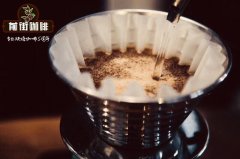Pacamara sun-treated fruit sweet cocoa mellow in Capetillo Manor, Guatemala

Professional coffee knowledge exchange more coffee bean information please follow the coffee workshop (Wechat official account cafe_style)
Qianjie-introduction to Pacamara of Capetilo Manor in Guatemala
The Capetilo estate has been run by the Pedro Echeverria family for generations, and now Mr Pedro Ashvania is in charge of the estate's affairs. The estate has a unique location, located on the inside of the Antigua Valley in Guatemala, between the Akernango and Agoa volcanic belts. Capetilo is an ancient estate that used to grow short-term crops such as sugar, but coffee has been grown since decades ago. the machines used to grind sugar are now used to remove the peel and flesh of coffee fruits, and so far they have been using water as the main source of electricity.
The vertical integration of the coffee estate is arranged on its own, from growing coffee seeds to packaging and arranging coffee exports. the equipment has also been upgraded recently. the latest generation of sorting machines and electronic picking machines are installed to ensure that stable and high-quality coffee can be produced continuously.
Capetilo Manor, one of the oldest estates in Guatemala, has a history of 140 years. The coffee garden is next to the volcano and therefore enjoys fertile volcanic soil. It is a certified member of the authentic Antigua Coffee Farmers Association and is famous for providing high-quality boutique coffee.
Pacamara of Capetilo Manor in Guatemala
Producing area | Antigua (Antiqua)
Altitude | 1500-1700 m
Variety | Pacamara (Pacamara)
Treatment | Solar
Flavor | Black cherry, heart, guava, sugar, lemon, cocoa tail rhyme
Knowledge: Antigua (Antigua) is located in the whole area of Madre plateau in the opographically Mountains of Guatemala, because of its natural conditions, Antigua has become the most famous producing area in Guatemala.
In short: Qianjie is a coffee research hall, happy to share the knowledge about coffee with you, we share unreservedly just to make more friends fall in love with coffee, and there will be three low-discount coffee activities every month. The reason is that Qianjie wants to make more friends drink the best coffee at the lowest price, which has been Qianjie's tenet for 6 years!
END
Important Notice :
前街咖啡 FrontStreet Coffee has moved to new addredd:
FrontStreet Coffee Address: 315,Donghua East Road,GuangZhou
Tel:020 38364473
- Prev

Guatemala Antigua Coffee tasting Guatemalan Coffee Story Mayan Classical Culture
Professional coffee knowledge exchange more coffee bean information please follow the coffee workshop (Wechat official account cafe_style) front street-Guatemalan coffee story Mayan culture is one of the most important ancient cultures in the world, but also an important classical culture in America. According to historical data, the Mayans cultivated new grain varieties that made great contributions to mankind in agricultural production, such as corn and tomatoes.
- Next

Ethiopian Coffee Culture many varieties of Ethiopian coffee are known as the gene bank of coffee.
Professional coffee knowledge exchange more coffee bean information please follow the coffee workshop (Wechat official account cafe_style) Qianjie-Ethiopian coffee culture introduction Coffee name comes from the Ethiopian kaffa in East Africa Ethiopia in ancient Greek means the land where people were tanned by the sun. Ethiopia's unique cultural tradition, pleasant climate, rich
Related
- Beginners will see the "Coffee pull flower" guide!
- What is the difference between ice blog purified milk and ordinary milk coffee?
- Why is the Philippines the largest producer of crops in Liberia?
- For coffee extraction, should the fine powder be retained?
- How does extracted espresso fill pressed powder? How much strength does it take to press the powder?
- How to make jasmine cold extract coffee? Is the jasmine + latte good?
- Will this little toy really make the coffee taste better? How does Lily Drip affect coffee extraction?
- Will the action of slapping the filter cup also affect coffee extraction?
- What's the difference between powder-to-water ratio and powder-to-liquid ratio?
- What is the Ethiopian local species? What does it have to do with Heirloom native species?

